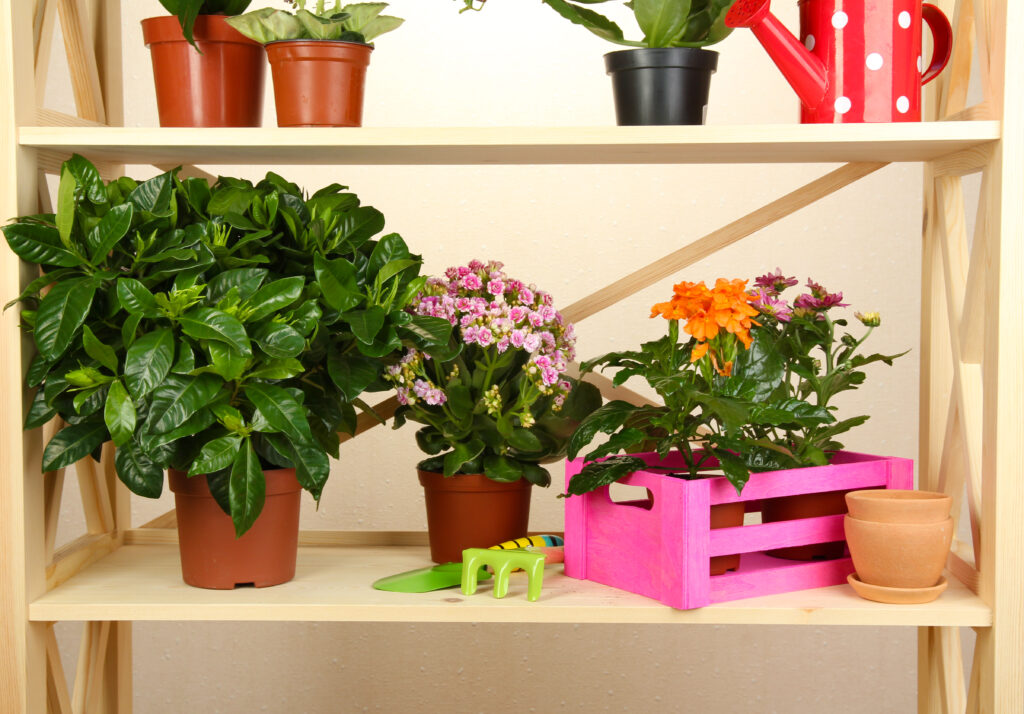The art of transforming existing furniture into spectacular plant displays, especially with a focus on repurposed furniture plant display, combines sustainability with creativity. Repurposed furniture offers unique character and functionality that purpose-built plant stands often lack. This approach to indoor plant arrangement not only gives new life to underutilized pieces but also creates personalized displays that showcase your botanical collection in distinctive settings.
Repurposed Furniture Plant Display Ideas
Transforming Bookshelves into Vertical Gardens
Standard bookshelves represent the perfect starting point for creating a magnificent bookshelf garden that displays plants at varying heights while maintaining excellent accessibility.
Optimizing Bookcase Structure for Plants
- Remove select shelves to accommodate taller specimens
- Install grow lights under upper shelves for lower-shelf illumination
- Add moisture barriers like plastic liners or decorative trays
- Create varied microclimates by adjusting shelf spacing
- Consider clear backing to maximize light transmission
Plant Selection for Bookcase Displays
When converting bookshelves to plant habitats, consider these placement strategies:
- Position trailing plants like pothos or string of pearls at the edges of upper shelves
- Place statement plants with architectural forms at eye level
- Group smaller specimens with similar care needs together
- Use remaining shelf space for plant care books and botanical accessories
Dresser Drawers as Tiered Plant Displays
Older dressers offer extraordinary potential for creative plant arrangements through strategic drawer positioning.
Transformation Techniques
- Pull drawers out at graduated distances for a cascading effect
- Remove selected drawers completely to accommodate larger plants
- Line drawers with waterproof material for direct planting
- Replace drawer fronts with mesh or lattice for climbing plants
- Install casters for mobility in changing light conditions
Ladder Transformations for Vertical Plant Growth
Whether decorative or functional, ladders create instant vertical interest when repurposed for plants.

Ladder Upcycle Ideas for Plant Displays
- Secure boards across rungs to create stable shelving
- Hang S-hooks from steps for suspended planters
- Position at 45-degree angles in corners for dimensional displays
- Paint or stain to complement your interior design
- Attach small containers directly to rungs for herb gardens
Repurposing Tables for Statement Plant Arrangements
Tables of all sizes provide stable platforms for creating impactful plant groupings.
Coffee Table Conversions
- Replace glass tops with mesh for terrariums positioned underneath
- Install raised edges to contain decorative pebbles or moss
- Add casters for repositioning based on seasonal light changes
- Create divided sections for plants with different needs
Side Table Transformations
- Stack smaller tables of graduating sizes for a tiered effect
- Cut circular openings in tabletops to insert planters at varied heights
- Join similar tables in clusters for expanded display surfaces
- Create multi-level arrangements using tables of different heights
Creative Cabinet Conversions for Plant Display
Cabinets provide enclosed environments perfect for humidity-loving plants.
Cabinet Modification Strategies
- Replace solid doors with glass for terrarium-like conditions
- Remove doors completely for open display
- Install grow lights in upper sections
- Add decorative legs for improved height and air circulation
- Create specialized growing compartments for propagation
Practical Considerations for Furniture Repurposing
Successful furniture transformations require attention to plant health and furniture preservation.
Essential Modifications for Plant Success
- Ensure adequate water protection for wood surfaces
- Create proper drainage solutions for container plants
- Consider furniture weight capacity for heavy pots
- Evaluate light conditions at furniture location
- Assess air circulation around repurposed pieces
Furniture Preservation Techniques
- Apply water-resistant sealants to vulnerable surfaces
- Install protective barriers between plants and furniture
- Elevate containers to allow airflow beneath
- Use saucers and trays to catch water overflow
- Regularly inspect for moisture damage or warping
By thoughtfully repurposing existing furniture pieces, you create unique indoor plant arrangements that showcase both your plants and your creativity. This sustainable approach gives new purpose to underutilized items while creating personalized botanical displays that enhance your living environment.




